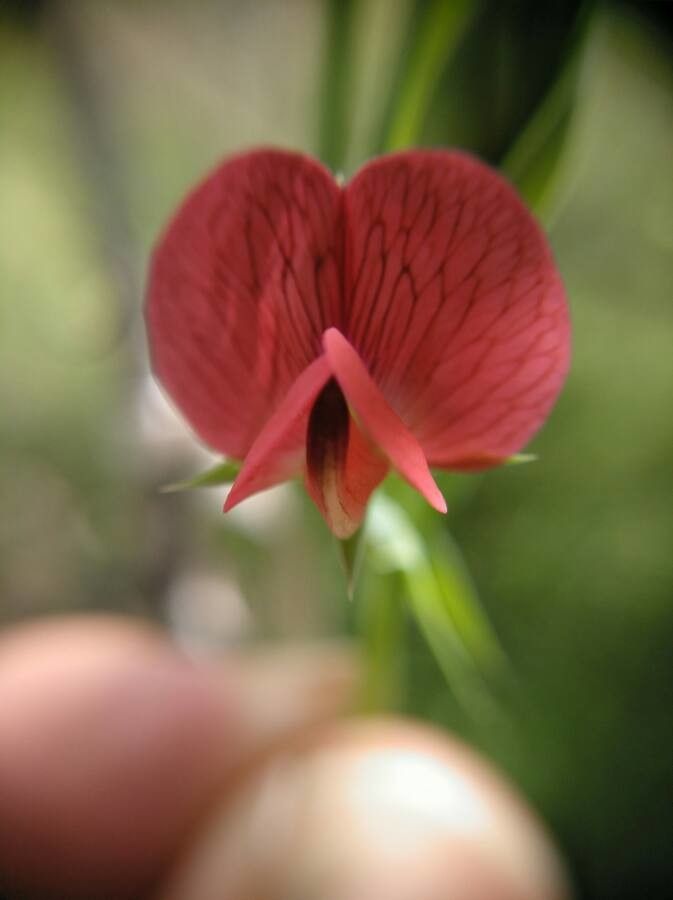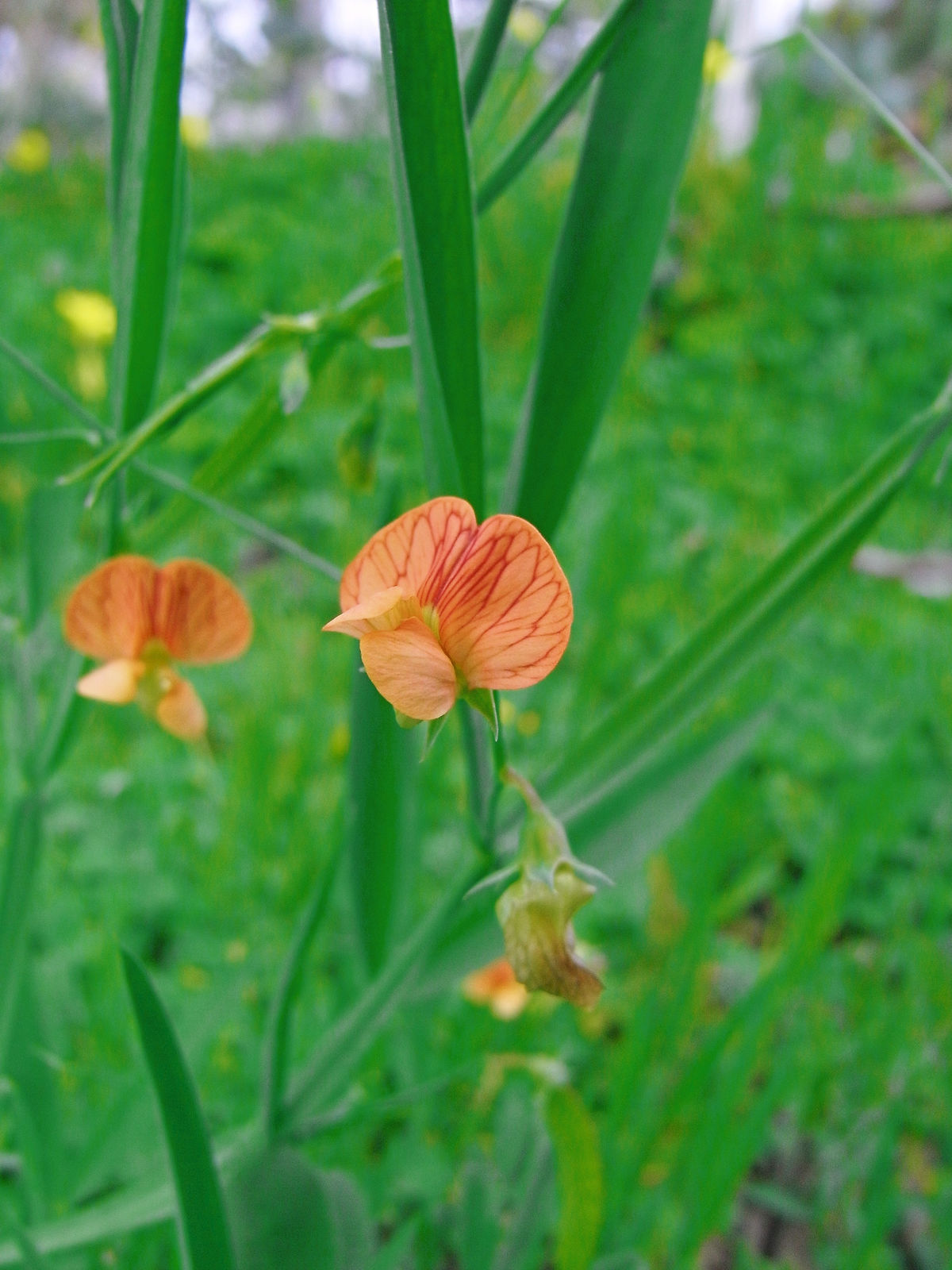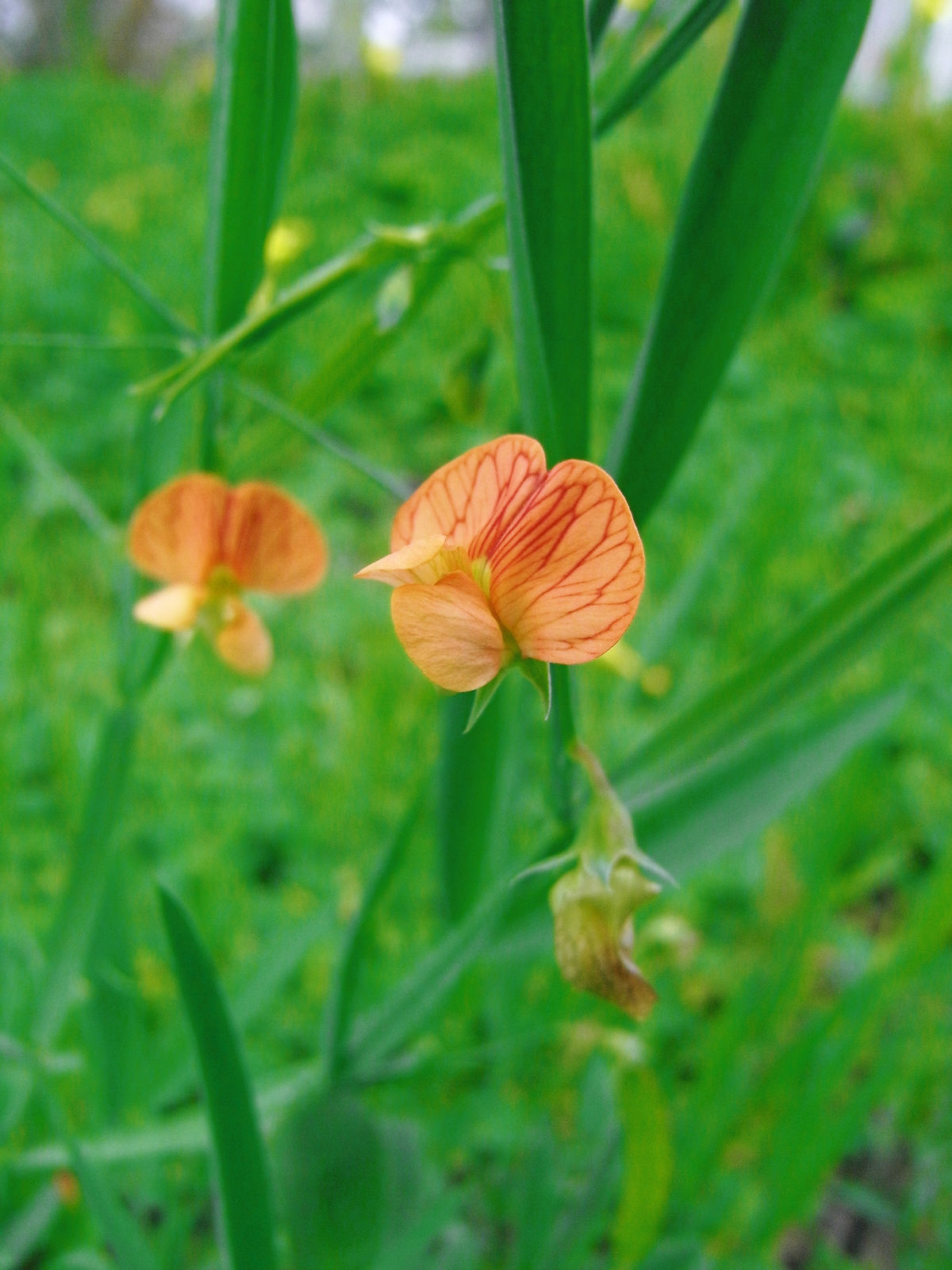Red Lentil Pea
lathyrus cicera
Also known as: ["Red Vetchling","Chickling Vetch"]
Overview
A herbaceous annual legume with pinnate leaves and small red flowers, native to the Mediterranean region.
Benefits & Perks
["wildlife attractant (bees, butterflies, birds)","drought tolerant","low maintenance"]
Botanical Classification
| Phylum: | Magnoliophyta |
| Class: | Magnoliopsida |
| Order: | Fabales |
| Family: | Fabaceae |
| Genus: | Lathyrus |
| Botanical Name: | Lathyrus cicera |
Plant Characteristics
Basic Information
- Category: Flowers
- Suitable Location: garden bed or container in a sunny spot
- Suitable For:
- Is Weed: No
- Allergenicity: low
Environmental Needs
- Climate: {"temperatureRange":"5–30°C"}
- Hardiness: {"zones":"6–9"}
- Misting: rarely required, only if ambient humidity is very low
- Drainage: Fast-draining to prevent waterlogging.
- Soil Type: Well-draining, loamy soil with added organic matter.
Maintenance Level
- Maintenance Level: low
- Toughness Level: moderate
- Pruning Frequency: Light pruning can be done as needed; major pruning in late winter or early spring before new growth begins.
- Pruning Intensity: Light to moderate; avoid heavy pruning unless necessary to control size or shape.
Care Details
Ideal Sunlight Coverage:
Full sun (6–8 hours/day); tolerates partial shade but blooms best in direct light.
Sunlight Tolerance Tips:
Acclimate gradually if moving from shade to sun; protect from intense midday sun in hot climates; ensure good air circulation to prevent fungal issues.
Care Requirements
Care Difficulty
easymoderate
Sunlight
full sun to partial shade
Rotate plant for even growth; use sheer curtains to filter harsh sun; avoid placing near large windows with direct afternoon sun.
Watering
every 7–10 days during active growth, reduce in winter
Water thoroughly but infrequently; ensure soil dries between waterings; avoid wetting foliage to prevent fungal issues.
Soil
well-drained, loamy soil with moderate organic matter
pH: Slightly acidic to neutral (pH 6.0–7.0).
Avoid heavy clay soils; ensure pots have drainage holes; test soil pH annually.
Temperature
Prefers 60–75°F (15–24°C); can tolerate cooler temperatures but avoid frost.
Avoid sudden temperature changes; protect from drafts; maintain consistent room temperature for indoor plants.
Fertilizing
every 4–6 weeks during growing season
Fertilize after watering to prevent root burn; stop fertilizing when plant is dormant; flush soil occasionally to prevent salt buildup.
Propagation
Methods
Seed propagation is most common; stem cuttings can also be used.
Step-by-Step Propagation Guide
- Prepare medium.
- Plant seeds or cuttings.
- Maintain moisture.
- Provide warmth.
- Transplant once rooted.
Best Time: Spring or early summer when plant is actively growing.
Environment
Warm (65–75°F), high humidity, and bright indirect light.
Medium
Well-draining seed starting mix or perlite and peat moss blend.
Hormone
Rooting hormone is optional but can improve success rates for stem cuttings.
Timeline
Seeds germinate in 1–3 weeks; cuttings root in 3–6 weeks.
Tools Needed
Seed trays, rooting hormone, misting bottle, heat mat.
Quick Tips
Soak seeds overnight before planting; use bottom heat for faster germination; keep cuttings out of direct sun.
Pruning & Repotting
Pruning Guide
Method
Pinch back tips to encourage branching; trim back leggy stems; remove spent flowers to promote reblooming.
Pruning Plan
Prune to maintain shape, encourage bushier growth, and remove dead or diseased parts.
Tools
Pruning shears, sharp scissors, gloves.
Checklist
Clean tools; prune at a 45-degree angle; remove dead/diseased parts; sterilize tools after use.
Repotting Guide
Best Season
Early spring before active growth begins.
Pot Size
Increase pot size by 1–2 inches in diameter; ensure good drainage holes.
Method
Remove plant gently; trim roots if necessary; place in new pot with fresh soil; water thoroughly.
Suggestions
Repot every 2–3 years or when roots fill the pot; beneficial for container-grown plants to refresh soil and provide space.
Checklist
Choose appropriate pot; prepare new soil mix; handle roots carefully; water after repotting.
Advanced Care Tips
Watering Mastery
Watering Checklist
Check soil moisture; water deeply; ensure drainage; avoid wetting leaves.
How to Apply Water Properly
Water at the base of the plant, ensuring moisture reaches the root zone; allow excess water to drain away; water in the morning to reduce evaporation and fungal risk.
Watering Schedule Tips
Water deeply once the top inch of soil is dry; reduce frequency in winter to prevent root rot.
Soil Improvement
Add perlite or sand for drainage; incorporate compost for fertility; use mulch to retain moisture.
Temperature Stress Management
Signs of Temperature Issues
Yellowing leaves (cold stress); wilting or leaf drop (heat stress); stunted growth.
Cold Stress
Slows growth; may cause leaf discoloration; can lead to root damage if temperatures drop below 50°F (10°C).
Solution: Move to a warmer location; use a heat mat for seedlings; cover plants during cold nights.
Hot Stress
Leaves may wilt, curl, or scorch; reduced flowering; increased water demand.
Solution: Provide shade during peak heat; increase watering frequency; use mulch to retain soil moisture.
Fertilizing Guide
Fertilizing Checklist
Check fertilizer label; dilute properly; apply to moist soil; avoid contact with foliage.
Fertilizing Method
Use balanced liquid fertilizer diluted to half strength every 4–6 weeks during growing season; avoid fertilizing in winter.
Common Problems & Solutions
Toxicity Warning
Cats
ToxicCats are also susceptible to the neurotoxic effects of ODAP found in Lathyrus cicera seeds. Ingestion can lead to severe neurological symptoms and motor dysfunction.
⚠️ Symptoms:
🌿 Toxic Parts:
⚡ Toxic If:
if eaten
Dogs
ToxicThe seeds of Lathyrus cicera are toxic to dogs due to the presence of ODAP, which can cause neurological damage similar to that in humans. Dogs are particularly susceptible to motor neuron degeneration upon ingestion.
⚠️ Symptoms:
🌿 Toxic Parts:
⚡ Toxic If:
if eaten
Humans
ToxicLathyrus cicera contains neurotoxic amino acids, particularly beta-oxalyl-L-alpha,beta-diaminopropionic acid (ODAP), which can lead to lathyrism, a neurological disorder characterized by motor neuron degeneration and paralysis. Chronic consumption of improperly processed seeds is associated with severe neurological damage.
⚠️ Symptoms:
🌿 Toxic Parts:
⚡ Toxic If:
if eaten
Frequently Asked Questions
Q: Is Lathyrus cicera edible?
A: While the seeds are edible when properly prepared, they contain toxins if consumed raw or in large quantities.
Q: Does this plant require full sun?
A: Yes, Lathyrus cicera thrives in full sun but can tolerate partial shade.
Q: How tall does Lathyrus cicera grow?
A: It typically grows to about 30-60 cm in height.
Quick Reference
| Family: | Fabaceae |
| Care: | easy |
| Light: | full sun to partial shade |
| Water: | every 7–10 days during activ |
Get Expert Care Tips
Download the Plantious app for personalized care reminders and plant identification!
Google Play App Store








